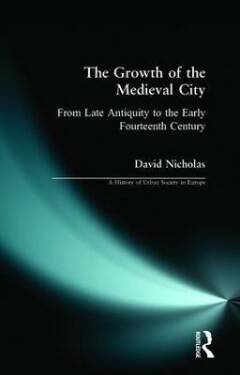
- Afhalen na 1 uur in een winkel met voorraad
- Gratis thuislevering in België vanaf € 30
- Ruim aanbod met 7 miljoen producten
- Afhalen na 1 uur in een winkel met voorraad
- Gratis thuislevering in België vanaf € 30
- Ruim aanbod met 7 miljoen producten
Zoeken
The Growth of the Medieval City
From Late Antiquity to the Early Fourteenth Century
David M Nicholas
€ 109,95
+ 219 punten
Uitvoering
Omschrijving
The first part of David Nicholas's massive two-volume study of the medieval city, this book is a major achievement in its own right. (It is also fully self-sufficient, though many readers will want to use it with its equally impressive sequel which is being published simultaneously.) In it, Professor Nicholas traces the slow regeneration of urban life in the early medieval period, showing where and how an urban tradition had survived from late antiquity, and when and why new urban communities began to form where there was no such continuity. He charts the different types and functions of the medieval city, its interdependence with the surrounding countryside, and its often fraught relations with secular authority. The book ends with the critical changes of the late thirteenth century that established an urban network that was strong enough to survive the plagues, famines and wars of the fourteenth and fifteenth centuries.
Specificaties
Betrokkenen
- Auteur(s):
- Uitgeverij:
Inhoud
- Aantal bladzijden:
- 432
- Taal:
- Engels
- Reeks:
Eigenschappen
- Productcode (EAN):
- 9780582299061
- Verschijningsdatum:
- 18/04/1997
- Uitvoering:
- Paperback
- Formaat:
- Trade paperback (VS)
- Afmetingen:
- 138 mm x 216 mm
- Gewicht:
- 539 g

Alleen bij Standaard Boekhandel
+ 219 punten op je klantenkaart van Standaard Boekhandel
Beoordelingen
We publiceren alleen reviews die voldoen aan de voorwaarden voor reviews. Bekijk onze voorwaarden voor reviews.











